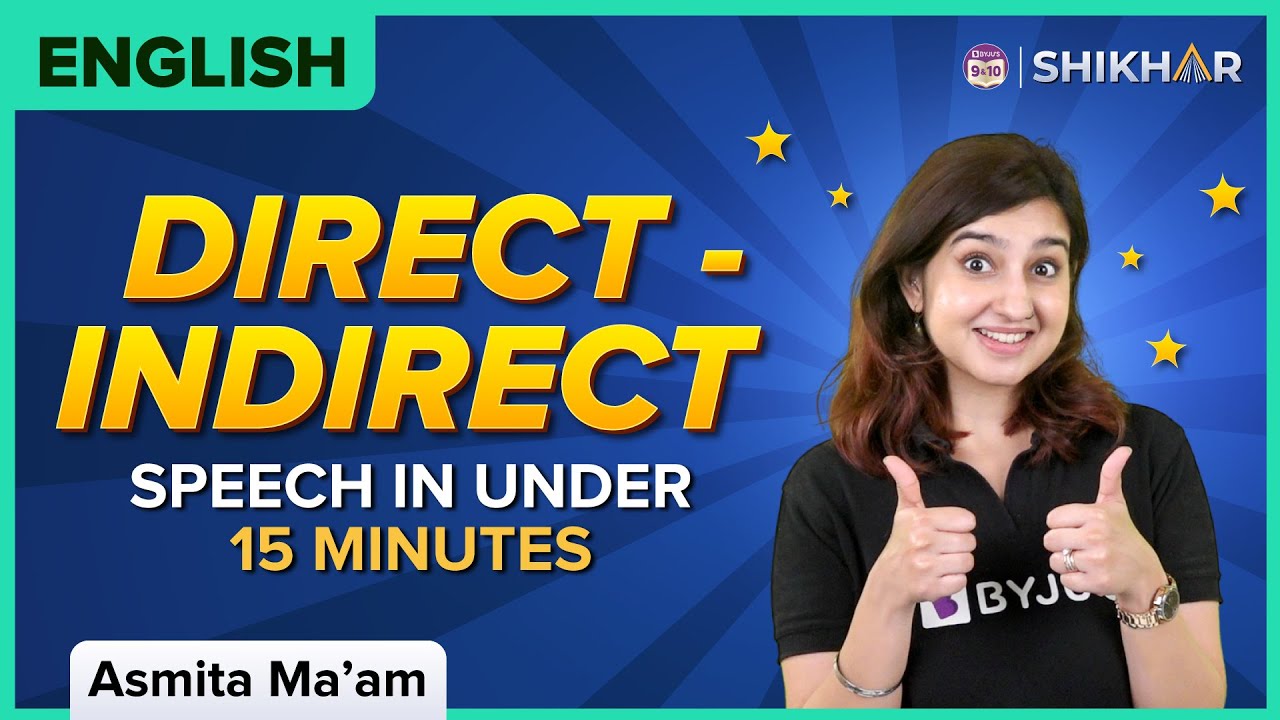Lesson 7: Speech Acts | Oral Communication in Context
Summary
TLDRThis lesson on oral communication discusses speech acts, focusing on different types, including direct and indirect speech acts, performatives, and their classifications. The speaker explains how words can perform actions, like making requests, promises, or declarations. Key concepts include the locutionary, illocutionary, and perlocutionary acts, and how utterances can influence listeners' responses. Indirect speech acts, such as questions with implied actions, are highlighted alongside examples of performative statements that change reality, like marriage vows or legal sentences.
Takeaways
- 📜 Speech acts are utterances that aim to achieve an intended effect, influencing listeners to perform an action or result in something happening.
- 🎤 Speech acts can be composed of one word, several words, or even longer sentences, and they all aim to perform actions like expressing gratitude, asking questions, or making promises.
- 💡 The Speech Act Theory by J.L. Austin categorizes speech acts into three parts: locutionary (the actual words), illocutionary (the social function or intention behind the words), and perlocutionary (the effect on the listener).
- 🗣️ An indirect speech act occurs when the structure of the sentence differs from its intended meaning, but the listener can still infer the correct meaning (e.g., 'Could you pass the salt?' meaning 'Please pass the salt').
- 👰 Performatives are statements that cause an action to happen immediately (e.g., 'I now pronounce you man and wife'), but they must be made by someone authorized to do so.
- 🧑⚖️ Only people with authority can use performatives effectively (e.g., a judge sentencing someone to prison), while others saying the same words would not have the same effect.
- 📚 John Searle (1979) classified speech acts into five types: assertives, directives, commissives, expressives, and declarations.
- ✅ Assertives express belief about the truth (e.g., making a suggestion), while directives aim to get the listener to perform an action (e.g., giving an order).
- 📅 Commissives commit the speaker to a future action (e.g., making a promise), and expressives convey the speaker's feelings or emotions (e.g., apologizing).
- 🔔 Declarations immediately change the state of the world through an utterance (e.g., firing an employee or baptizing a person).
Q & A
What is a speech act?
-A speech act is an utterance that a speaker makes to achieve an intended effect, often influencing the listener to do something or perform an action.
What are the three parts of speech acts according to J.L. Austin's theory?
-The three parts are locutionary, illocutionary, and perlocutionary acts. Locutionary refers to the act of saying something, illocutionary is the intended social function of what is said, and perlocutionary is the resulting effect on the listener.
Can you provide an example of a locutionary act?
-A locutionary act can be something as simple as saying, 'Please do the dishes.' It involves the actual structure and meaning of the sentence being spoken.
What is an indirect speech act?
-An indirect speech act is when the speaker’s intention is not explicitly stated, but the listener understands the intended meaning. For example, asking 'Could you pass the salt?' indirectly means 'Please pass the salt.'
How do performatives differ from regular speech acts?
-Performatives are statements that perform an action simply by being spoken, such as a judge saying, 'I sentence you to death.' However, these only hold meaning if the speaker is authorized to make such declarations.
Can anyone utter a performative statement?
-No, performative statements can only be effectively spoken by individuals who are authorized to do so, such as a priest declaring a couple married or a judge issuing a sentence.
What are the five classifications of speech acts as identified by Searle?
-The five classifications are assertive (stating something as true), directive (trying to get the listener to do something), commissive (committing to a future action), expressive (expressing feelings), and declarative (making a statement that immediately changes the state of the world).
What is an assertive speech act?
-An assertive speech act is when the speaker expresses a belief about the truth of a proposition, such as making a suggestion or stating a fact.
What is a directive speech act?
-A directive speech act is when the speaker tries to get the listener to perform an action, such as making a request, giving an order, or begging.
How can understanding speech acts improve communicative competence?
-By understanding speech acts, individuals can become more aware of how to align their communication with their intentions and social context, allowing for more effective and sensitive interactions.
Outlines

هذا القسم متوفر فقط للمشتركين. يرجى الترقية للوصول إلى هذه الميزة.
قم بالترقية الآنMindmap

هذا القسم متوفر فقط للمشتركين. يرجى الترقية للوصول إلى هذه الميزة.
قم بالترقية الآنKeywords

هذا القسم متوفر فقط للمشتركين. يرجى الترقية للوصول إلى هذه الميزة.
قم بالترقية الآنHighlights

هذا القسم متوفر فقط للمشتركين. يرجى الترقية للوصول إلى هذه الميزة.
قم بالترقية الآنTranscripts

هذا القسم متوفر فقط للمشتركين. يرجى الترقية للوصول إلى هذه الميزة.
قم بالترقية الآنتصفح المزيد من مقاطع الفيديو ذات الصلة

¿Qué son los actos de habla? Definición, tipos, clasificaciones | Austin y Searle

classification of illocutionary speech acts by Searle| Oral Communication in Context

Learn English Grammar: DIRECT & INDIRECT SPEECH (REPORTED SPEECH)

Teks Berita - Definisi, Kalimat Majemuk, Kalimat Langsung dan Tidak langsung

Direct - Indirect (Reported) Speech in Under 15 Minutes | Class 9 and 10 | English | BYJU'S

ORAL COMMUNICATION IN CONTEXT SECOND PERIODICAL TEST REVIEWER SENIOR HIGH SCHOOL (SHS)
5.0 / 5 (0 votes)
